 I loathe State Fair TV news coverage. And just to preempt the question, yes, I’m not “from here.”
I loathe State Fair TV news coverage. And just to preempt the question, yes, I’m not “from here.”
The State Fair begins today, but State Fair TV news coverage started in roughly February. I’ve already been through a lot, so allow me my primal scream.
Reasons to hate on State Fair TV news coverage:
Reason #1: Because it crowds out all other news coverage. If in the next ten days the Republican Speaker of the House comes out for a 75% tax on all Tea Party members’ Medicare benefits, the Vikings trade a 73-year old groundskeeper for Aaron Rodgers and Charles Woodson, and space aliens colonize a Mahtomedi strip mall, this much I promise you: You will not hear about it. No chance. Why? Because during the last 10 days of August there is sameness happening in Falcon Heights, Minnesota. And there is an unwritten rule in Twin Cities TV newsrooms: All that is the same in Falcon Heights must crowd out all that is new in the rest of the state. (Though to be fair, the crop art turns over every year.)
“It could be that his head wasn’t screwed on quite right. It could be, perhaps, that his shoes were too tight. But I think that the most likely reason of all may have been that his heart was two sizes too small.”
Reason #2: Because skinny people repeatedly fabricating overeating stories is never that funny. One of the many recurring gags we will suffer through during State Fair TV news coverage involves willowy anchors and svelte reporters exchanging witty repartee about how grotesquely bloated and obese they are from going all Joey Chestnut on Commoner Food all day long. Oh, the humanity! Their image consultants tell them that pretending to be like the binging masses will help their Nielsens. But make no mistake, they are mocking us, as they spit and rinse their Sweet Martha’s at station breaks, and nibble the sensible sack lunches packed by their personal nutritionists.
“And they’d feast! And they’d feast! And they’d FEAST! FEAST! FEAST!”
Reason #3: Because even hilarious jokes lose their charm when repeated the 653,776th time. “On a stick.” “Jokes” using those three hideous words will be repeated hundreds of times over the next 10 days on TV news. Though even Ed McMahon wouldn’t laugh the 653,776th time, you can count on our TV news friends to guffaw uproariously at every “on a stick” utterance, as if they just heard it for the first time. To make things worse, every PR person in town will put their client’s product or service on-a- stick – long term care insurance on-a-stick, get it?! — because it is the one guaranteed way to get coverage for your otherwise non-newsworthy client.
“They’d stand hand in hand and they’d start singing.”
Reason #4. Because Def Leppard hasn’t been remotely newsworthy for at least twenty years. …yet we can be certain that there will be a full length news story about them by every station. Why? Because for the last ten days or August, anything within earshot of the broadast booth is automatically deemed newsworthy. Plus, it’s so adorable when Frank tosses “Pour Some Sugar On Me” segues to Amelia.
“They’d sing! And they’d sing! AND they’d SING! SING! SING! SING!”
Reason #5. Because the 3.5 million Minnesotans who avoid the Fair every year are people too. One of the most fascinating parts of State Fair news coverage – and it’s quite a competition — is regular attendance updates. Spolier alert: The number will astound the reporters. Last year, it was 1.77 million. Though I’ve always suspected that’s probably the same 177,000 mini-donut addicts coming back each of the ten days, for the sake of argument, I’ll accept the number. Even using that number, that leaves something like 3.56 million of us — about two-thirds of all Minnesotans, I’ll have you know — who have chosen NOT to attend the State Fair. And maybe, just maybe, those of us who chose to stay away from the Great Minnesota SweatTogether would rather the news broadcast contain a little actual NEWS.
“Why for fifty-three years I’ve put up with it now! I MUST stop it from coming! …But HOW?”
There. I’m better now. Nothing like a good rant. On a stick.
Note: This is a Wry Wrerun, originally posted by Joe Loveland on The Same Rowdy Crowd blog in August of 2011.

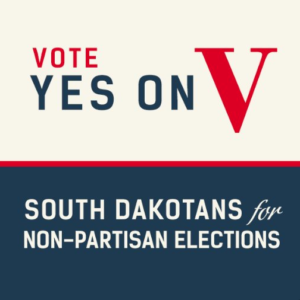 When I heard about the constitutional amendment on the South Dakota ballot to make all
When I heard about the constitutional amendment on the South Dakota ballot to make all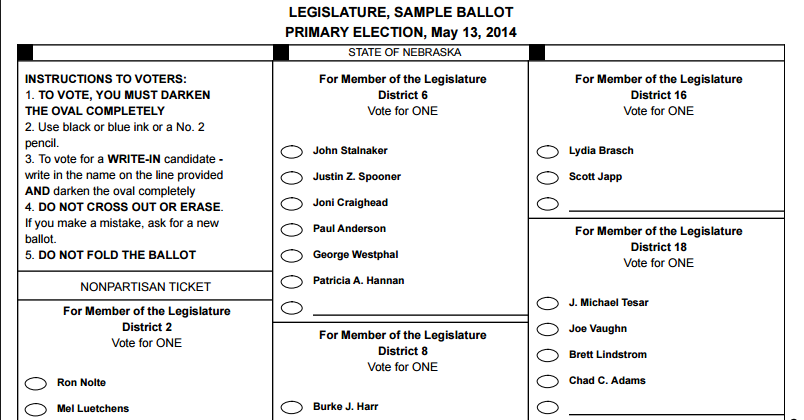
 Once every ten years, all states redraw state and congressional legislative district lines, so that the new boundaries reflect population changes that have occurred in the prior decade. In both Minnesota and South Dakota, elected state legislators draw those district map lines, and the decision-making is dominated by leaders of the party or parties in power.
Once every ten years, all states redraw state and congressional legislative district lines, so that the new boundaries reflect population changes that have occurred in the prior decade. In both Minnesota and South Dakota, elected state legislators draw those district map lines, and the decision-making is dominated by leaders of the party or parties in power.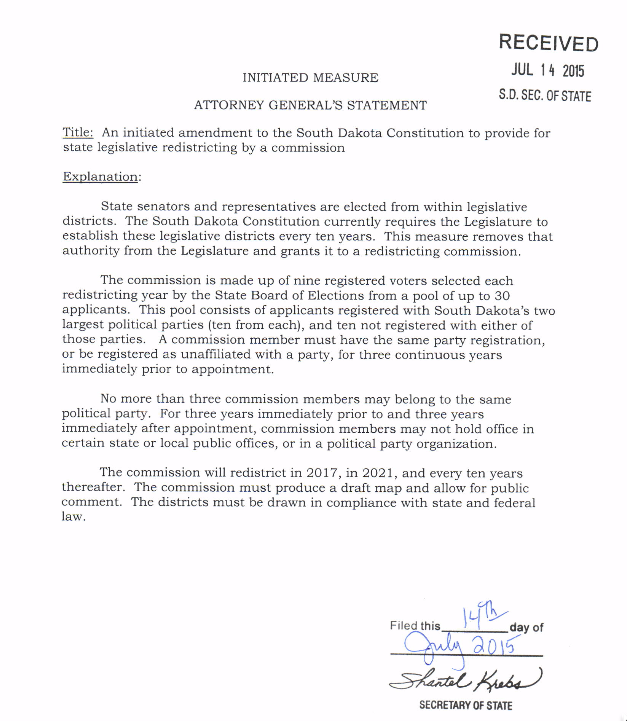 The basic rationale behind Amendment T is this: Elected officials have a direct stake in how those district boundaries are drawn, so giving them the power to draw the maps can easily lead to either the perception or reality of self-serving shenanigans.
The basic rationale behind Amendment T is this: Elected officials have a direct stake in how those district boundaries are drawn, so giving them the power to draw the maps can easily lead to either the perception or reality of self-serving shenanigans.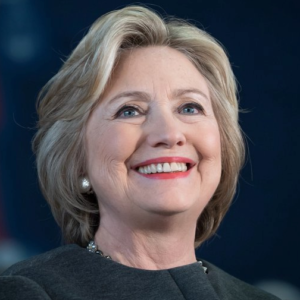 Though I’m a solid Hillary Clinton supporter, I don’t particularly relish defending her at water coolers, dinner tables and social media venues. When defending Hillary Clinton to those who hoped for more, I often feel like I do when defending the Affordable Care Act (ACA) to those who hoped for more.
Though I’m a solid Hillary Clinton supporter, I don’t particularly relish defending her at water coolers, dinner tables and social media venues. When defending Hillary Clinton to those who hoped for more, I often feel like I do when defending the Affordable Care Act (ACA) to those who hoped for more. When I started seeing ads and social media chatter about former Republican Governor Gary Johnson running for President, I went to
When I started seeing ads and social media chatter about former Republican Governor Gary Johnson running for President, I went to 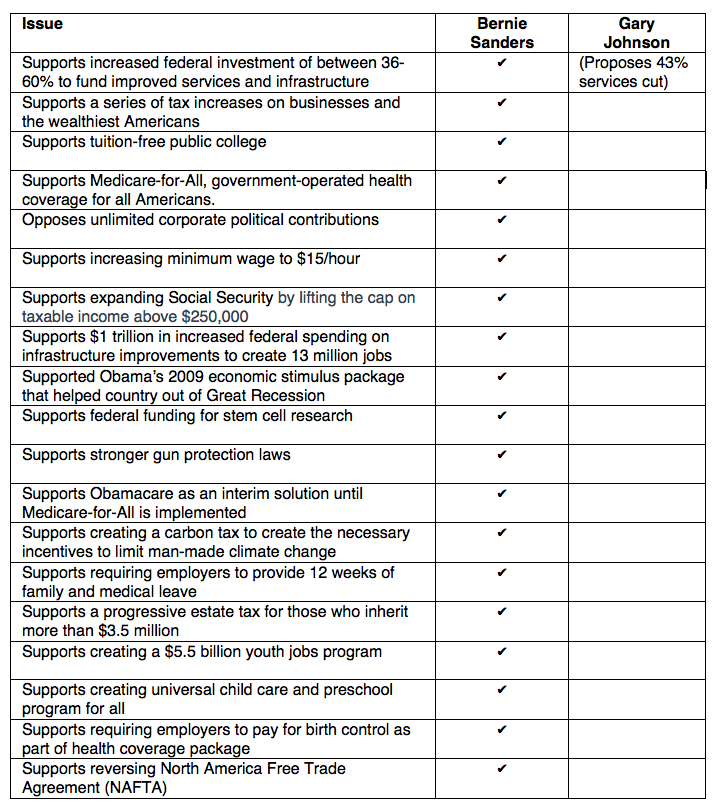
 In the era of Donald Trump and social media, these two statements haunt me.
In the era of Donald Trump and social media, these two statements haunt me.
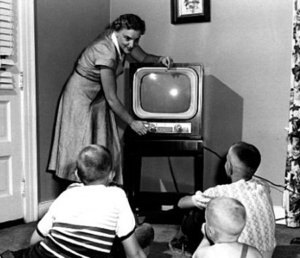 Editor’s Note: Because I’m busy and lazy, this blog gets stale. So occasionally, I’m going to re-publish posts from the past that are seasonal and still timely. Granted, it’s not a new episode, but it’s also not dead air. Perhaps I can become like TBS, and enjoy high ratings without ever having to produce original material! Anyway, I promise not to do it too often, but I hope you re-enjoy at least some of the blasts from the past.
Editor’s Note: Because I’m busy and lazy, this blog gets stale. So occasionally, I’m going to re-publish posts from the past that are seasonal and still timely. Granted, it’s not a new episode, but it’s also not dead air. Perhaps I can become like TBS, and enjoy high ratings without ever having to produce original material! Anyway, I promise not to do it too often, but I hope you re-enjoy at least some of the blasts from the past. Are Minnesota Vikings season ticket holders effectively government-dependent welfare queens? After all, a state legislator’s analysis finds that every Vikings ticket benefits from a taxpayer subsidy of over $72.
Are Minnesota Vikings season ticket holders effectively government-dependent welfare queens? After all, a state legislator’s analysis finds that every Vikings ticket benefits from a taxpayer subsidy of over $72.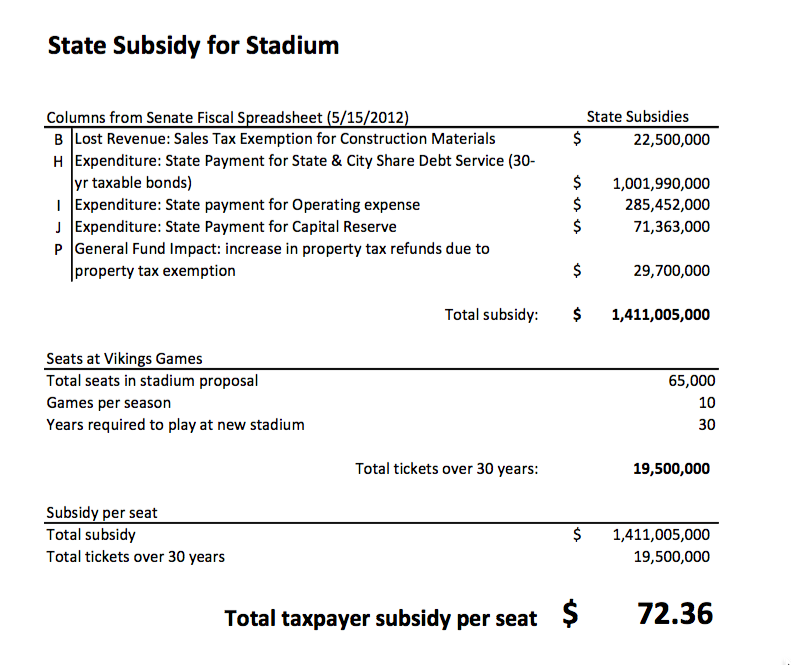 Critics may quibble with the specifics of the Marty analysis. But specifics aside, the undeniable fact remains that Minnesota taxpayers are on the hook for an enormous subsidy that looks to be much larger than the $498 million figure typically quoted during legislative debates.
Critics may quibble with the specifics of the Marty analysis. But specifics aside, the undeniable fact remains that Minnesota taxpayers are on the hook for an enormous subsidy that looks to be much larger than the $498 million figure typically quoted during legislative debates.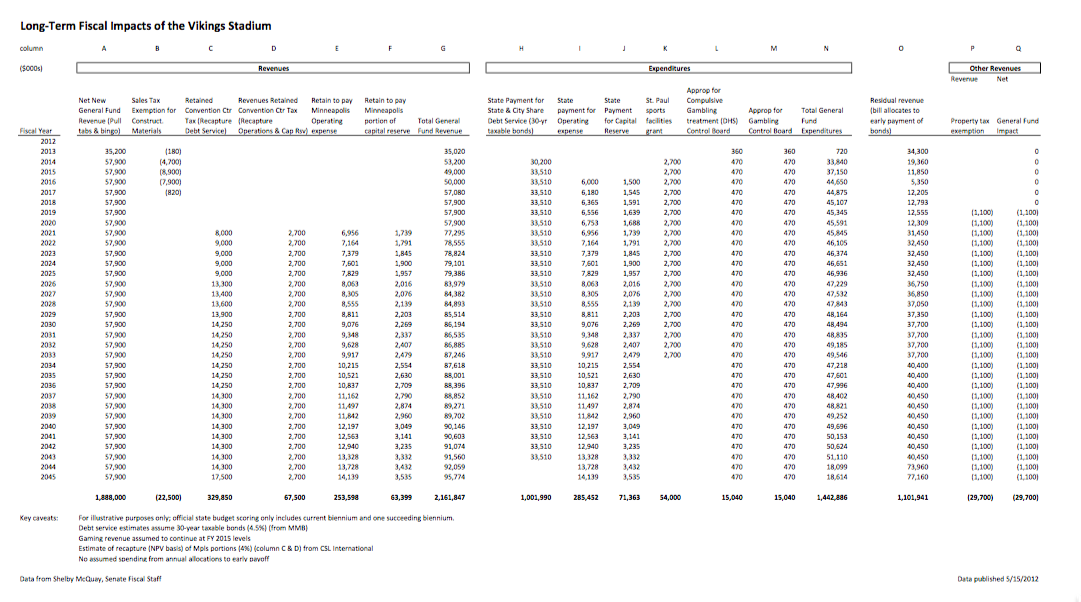


 So communications strategists typically identify a small number of messages or themes that they strive to repeat and stress above all the others. They’re often called “key messages,” or “frames.”
So communications strategists typically identify a small number of messages or themes that they strive to repeat and stress above all the others. They’re often called “key messages,” or “frames.”
 Governor Dayton has been very clear that early education investment is his Administration’s top priority. But you’d never know it by looking at the budget proposals coming out of the Minnesota Legislature so far this year.
Governor Dayton has been very clear that early education investment is his Administration’s top priority. But you’d never know it by looking at the budget proposals coming out of the Minnesota Legislature so far this year.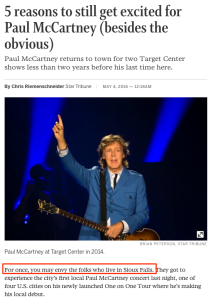 South Dakota is feeling under-loved, again. A South Dakota state senator wrote a commentary in today’s Star Tribune complaining about the newspaper’s
South Dakota is feeling under-loved, again. A South Dakota state senator wrote a commentary in today’s Star Tribune complaining about the newspaper’s 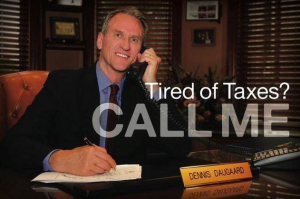 In fact, now that retirement is a decade or so away, it wouldn’t be the craziest thing in the world for my South Dakota-born wife and I to take our thousandaire fortune and retire closer to our South Dakota family and friends. After all, lots of old folks retire there to shield their income from taxes, since South Dakota has no income tax.
In fact, now that retirement is a decade or so away, it wouldn’t be the craziest thing in the world for my South Dakota-born wife and I to take our thousandaire fortune and retire closer to our South Dakota family and friends. After all, lots of old folks retire there to shield their income from taxes, since South Dakota has no income tax. As a Sanders supporter, I concede there are many valid reasons to worry about him. But one of the biggest “go-to” criticisms used by Senator Hillary Clinton and her supporters strikes me as simplistic and overblown. More importantly, her focus on that issue makes me worry that she perhaps doesn’t truly understand what it takes to be an effective general election candidate and President.
As a Sanders supporter, I concede there are many valid reasons to worry about him. But one of the biggest “go-to” criticisms used by Senator Hillary Clinton and her supporters strikes me as simplistic and overblown. More importantly, her focus on that issue makes me worry that she perhaps doesn’t truly understand what it takes to be an effective general election candidate and President.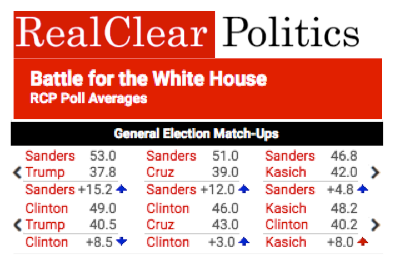

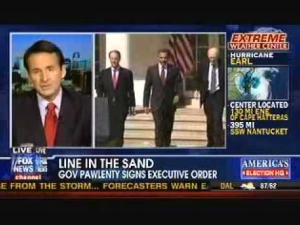 Oh and then there was that super nonpartisan time when Governor Pawlenty, who was preparing to run against President Obama, enacted an executive order to
Oh and then there was that super nonpartisan time when Governor Pawlenty, who was preparing to run against President Obama, enacted an executive order to 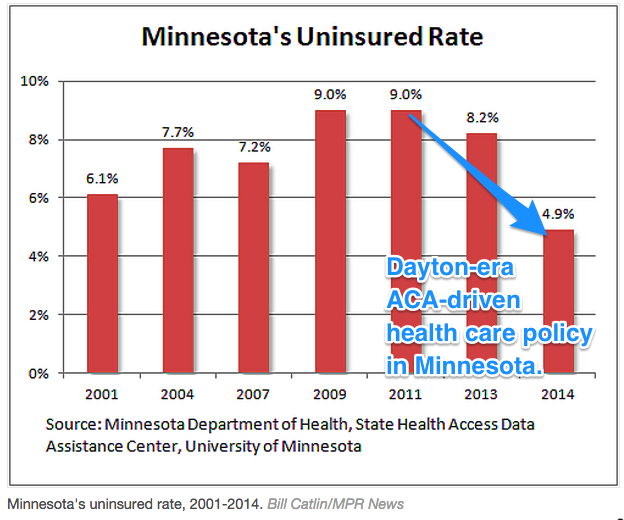
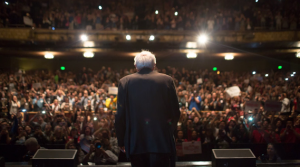 Presidential candidate Bernie Sanders has already given much to the Democratic Party. But even though his chances of being nominated remain slim, he still has a bit more he could give to his adopted party.
Presidential candidate Bernie Sanders has already given much to the Democratic Party. But even though his chances of being nominated remain slim, he still has a bit more he could give to his adopted party.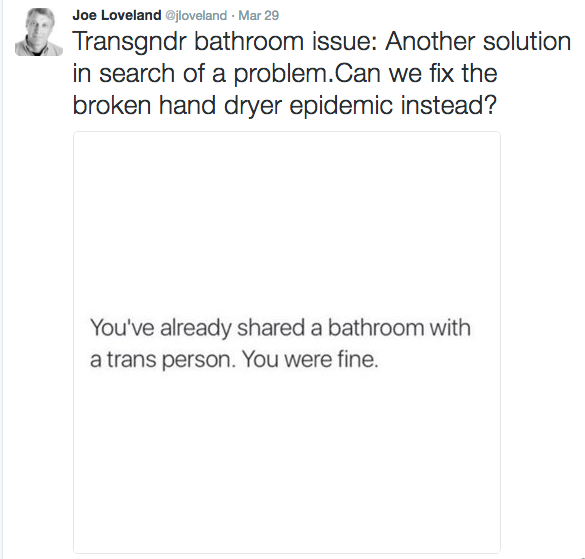
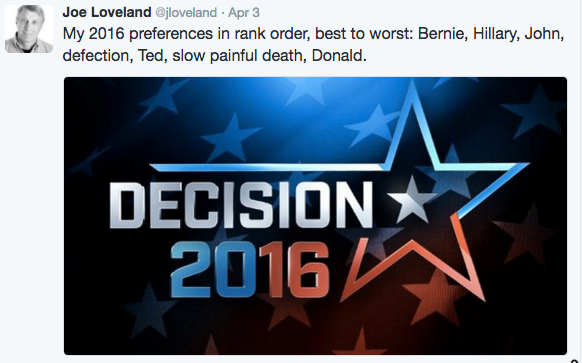
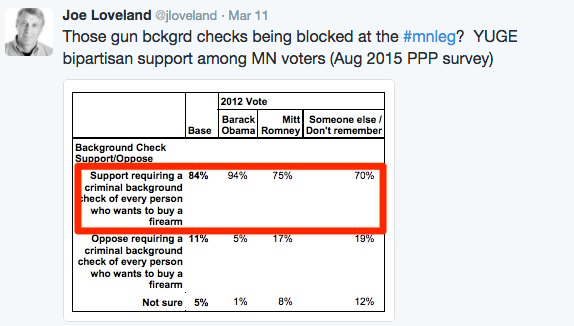
 But food deserts definitely do happen, particularly in low-income and
But food deserts definitely do happen, particularly in low-income and  Now that state legislators are creating better public spaces for visitors in the
Now that state legislators are creating better public spaces for visitors in the 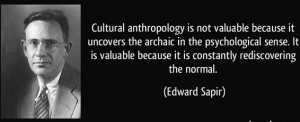 #2. The iPhone Prayer. The reason legislators continually have their heads bowed is not because they are prayerful or otherwise contemplative. It’s because of smart phones.
#2. The iPhone Prayer. The reason legislators continually have their heads bowed is not because they are prayerful or otherwise contemplative. It’s because of smart phones.